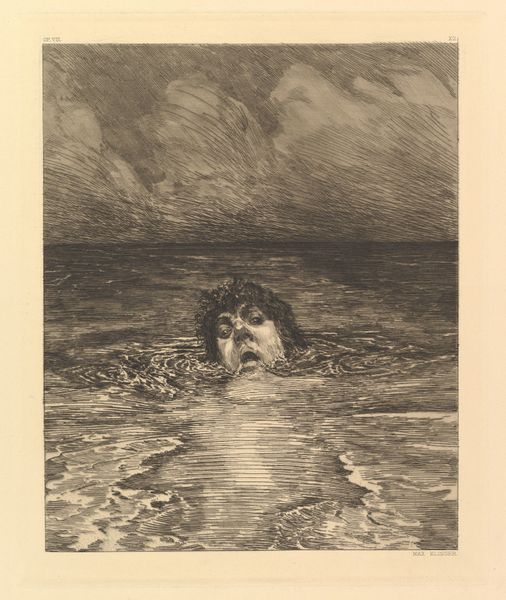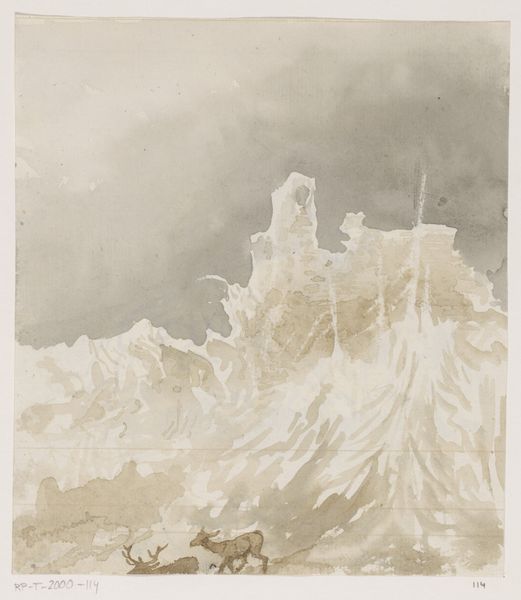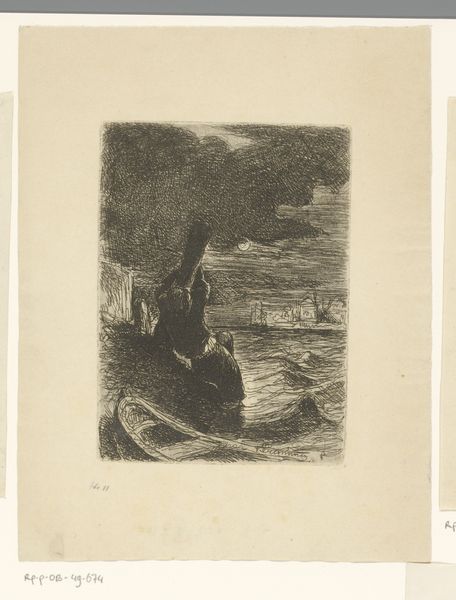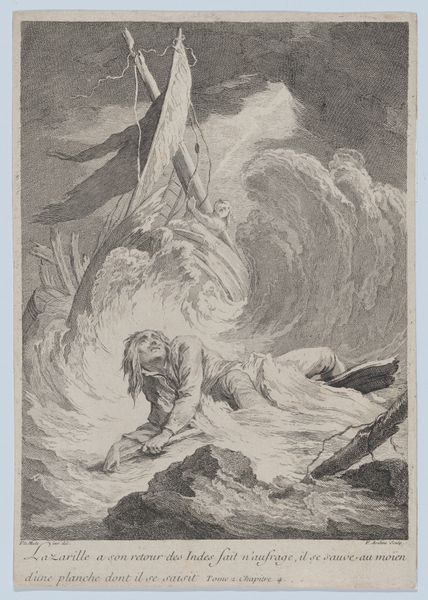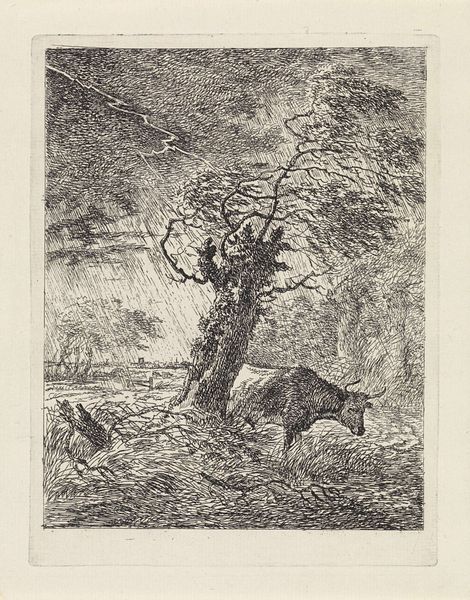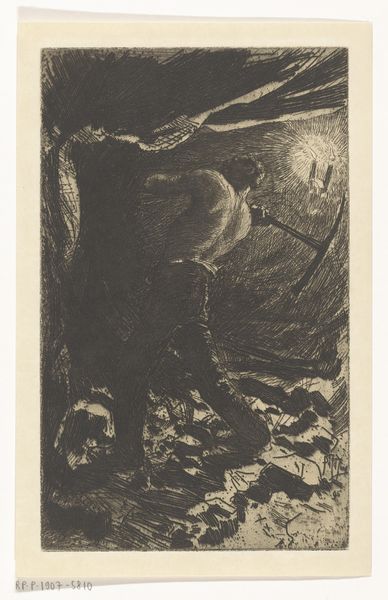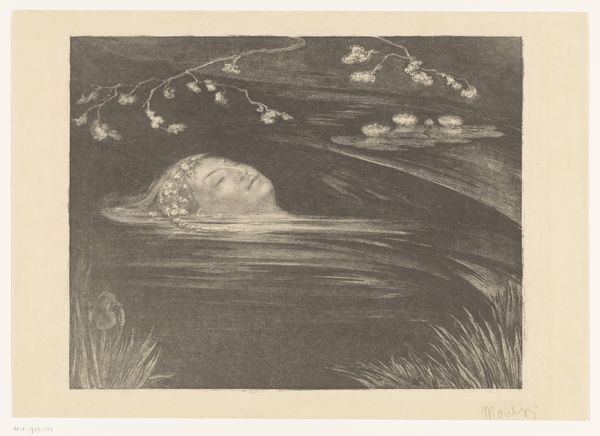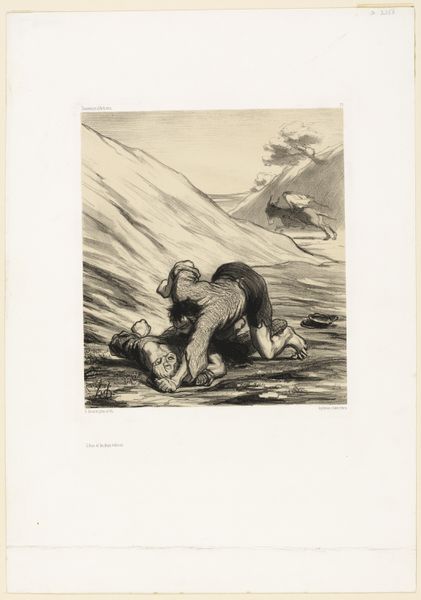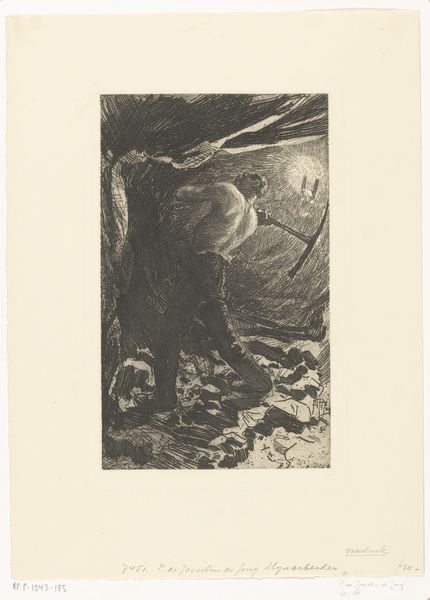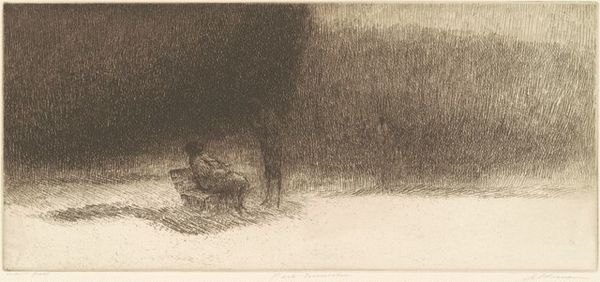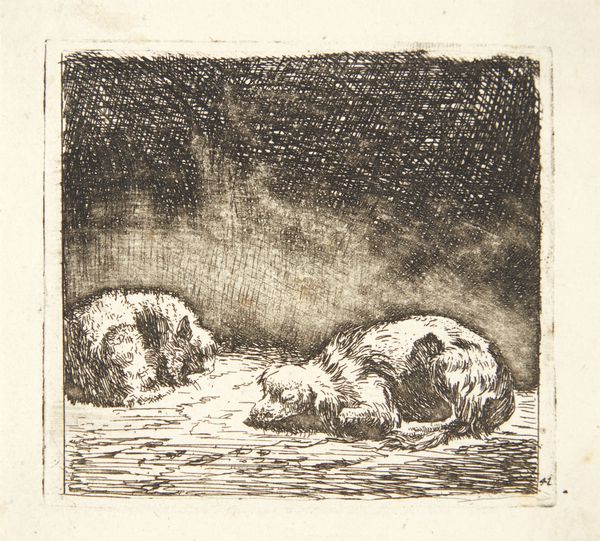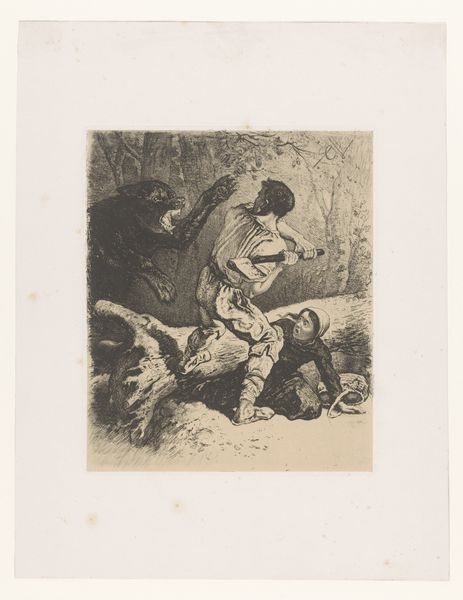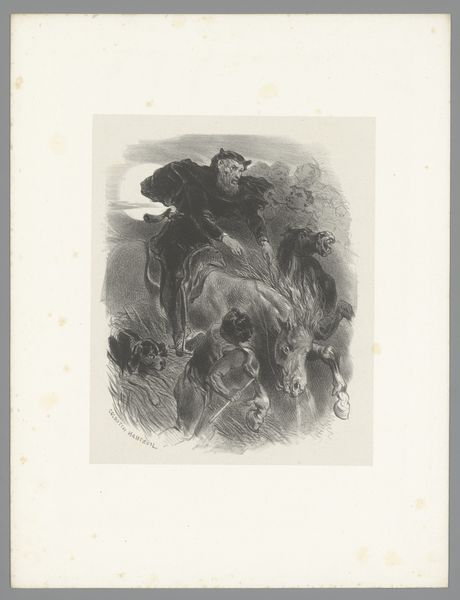
drawing, pencil
#
pencil drawn
#
drawing
#
snow
#
pencil sketch
#
landscape
#
pencil drawing
#
pen-ink sketch
#
pencil
#
realism
Dimensions: height 169 mm, width 121 mm
Copyright: Rijks Museum: Open Domain
Editor: Here we have Karl Bodmer's "Vos kruipt in een hol in de sneeuw," created in 1872 using pencil. I'm really struck by the contrast between the dark fox and the overwhelming white snow. What elements stand out to you in this piece? Curator: The first thing I notice is the process. It’s not just a drawing of a fox, but a study in the *making* of an image using graphite on paper. Bodmer’s labor is apparent. He’s not hiding the materiality; he emphasizes it. The repetitive strokes, the varying pressure creating light and shadow – it all speaks to the hand and the physical effort involved. It makes you consider the social context: who was this piece made for? What kind of market was there for studies of this nature? Editor: I see what you mean. It feels less like a finished, polished piece and more like a document of a specific moment, of Bodmer's engagement with the natural world. Do you think that choice of material--pencil-- reflects a conscious decision to depict a fleeting, perhaps harsh environment? Curator: Absolutely! Pencil is a readily available material, practical and unpretentious. This connects, potentially, to the broader tradition of landscape and animal studies being produced for scientific observation or practical use, such as hunting preparation. Was this perhaps a commodity made for a particular social group? I wonder what the consumption of this drawing looked like in its original context. Editor: That's fascinating, considering how much we value the 'artistic vision' sometimes to the exclusion of those more practical elements. Curator: Exactly. By focusing on the materials and labor involved, we can move beyond the purely aesthetic and engage with the artwork on a deeper, more grounded level. Think of the supply chains for pencils then: the mines producing the graphite, the factories processing it, and then consider who had access to this material? It opens up whole new avenues of understanding! Editor: I never considered those economic elements of art before; I see how it offers a unique interpretation. Thanks for shedding light on this artwork for me. Curator: My pleasure. Seeing art through the lens of production, material, and labor allows for continuous rediscovery!
Comments
No comments
Be the first to comment and join the conversation on the ultimate creative platform.
